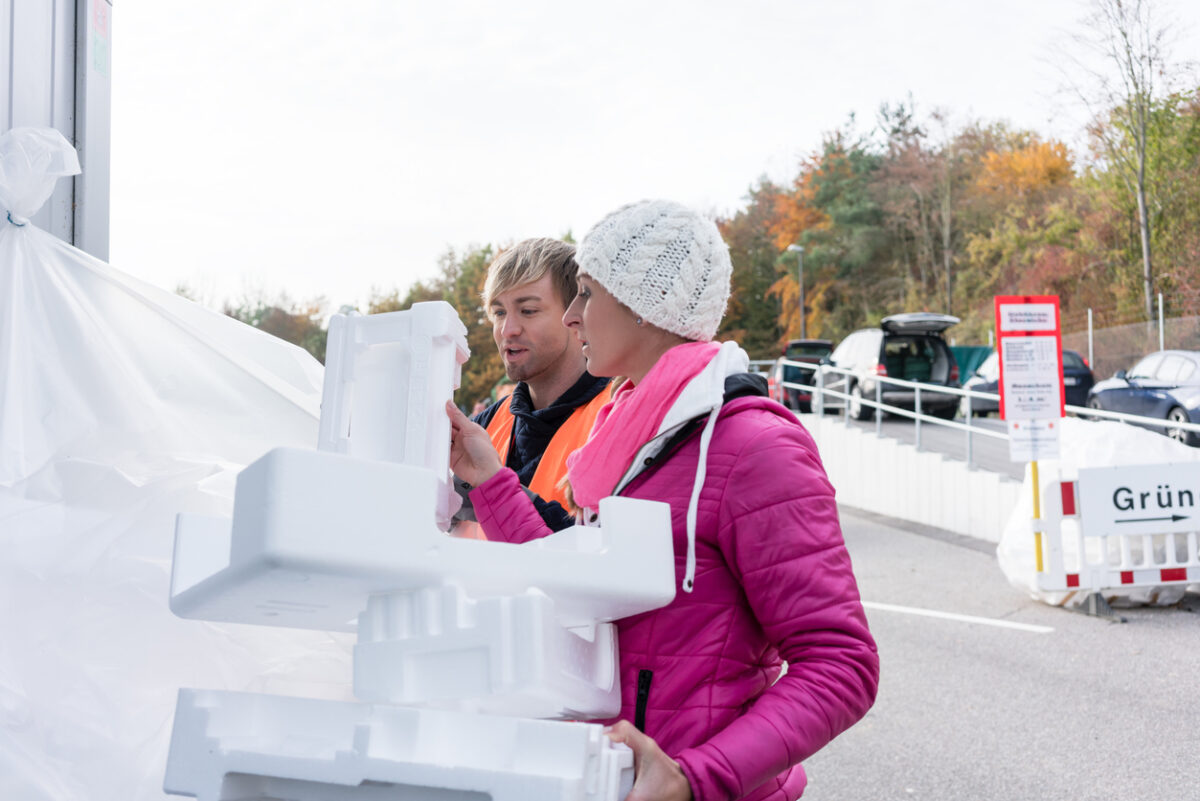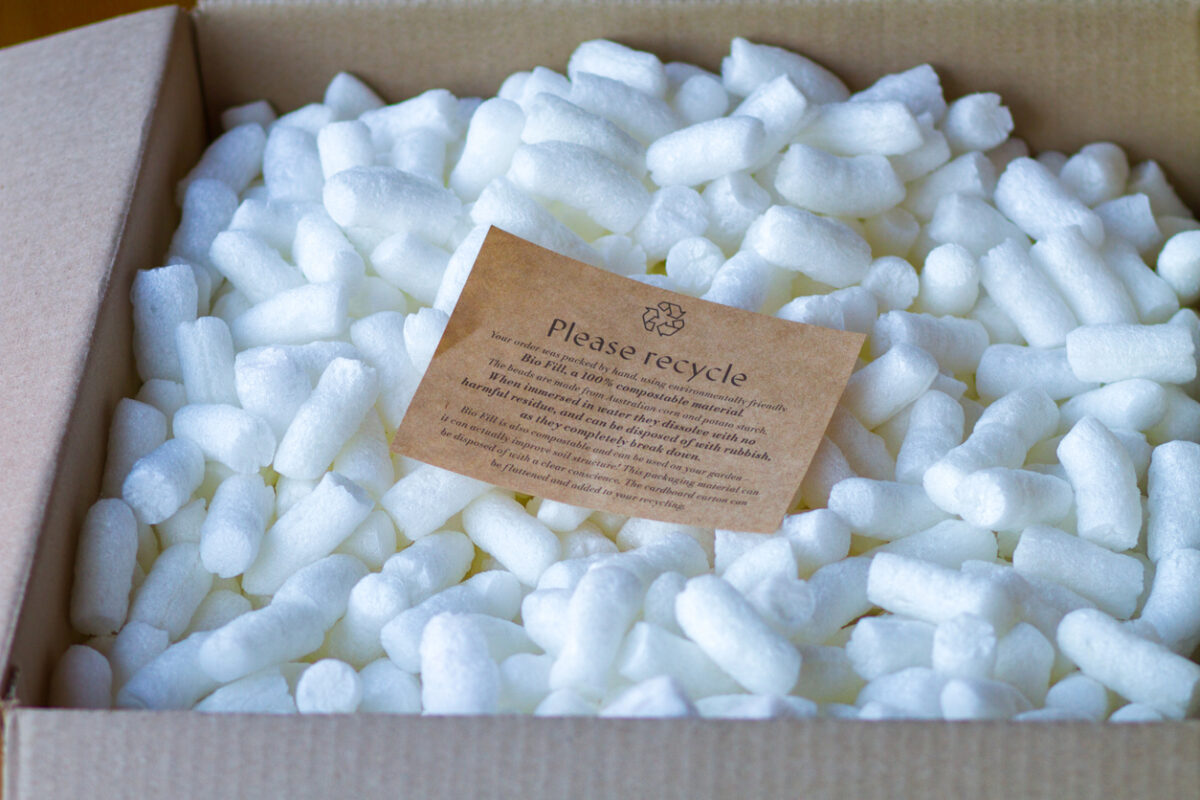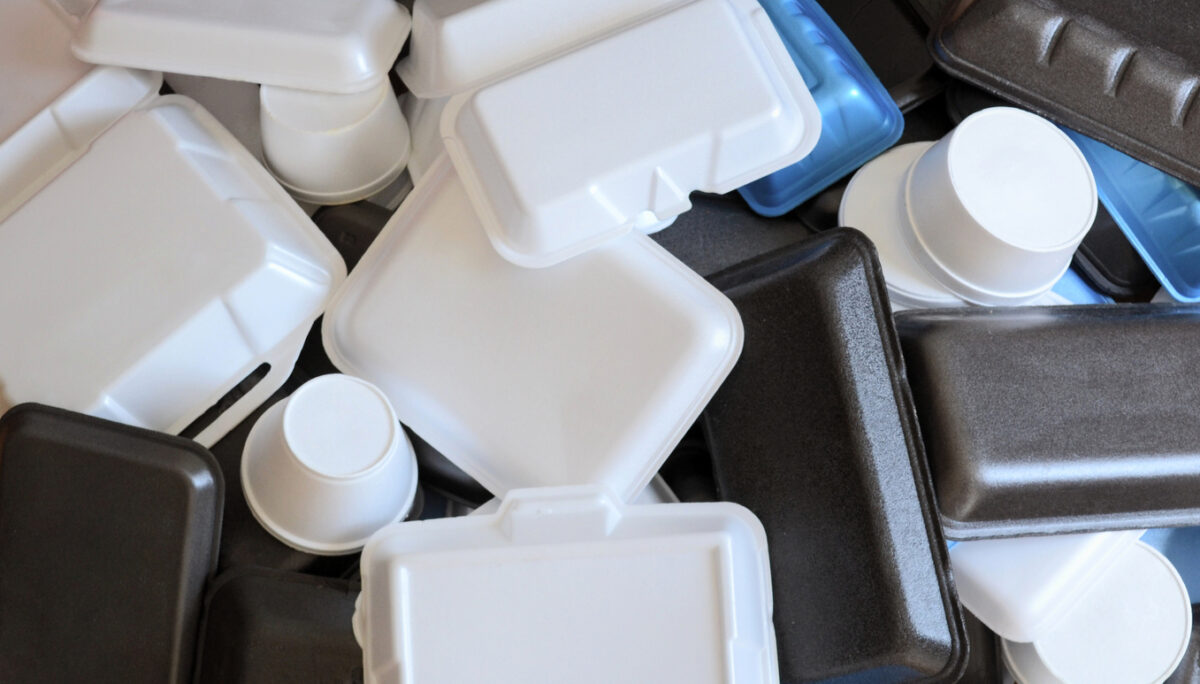We may earn revenue from the products available on this page and participate in affiliate programs. Learn More ›
Q: Between delivery boxes filled with Styrofoam peanuts and takeout orders packed in Styrofoam containers, I always seem to have a lot of Styrofoam on hand. I’ve been tossing it into the regular trash, but I’m wondering how to dispose of Styrofoam in a more environmentally friendly way. What are some alternative methods of repurposing or disposing of Styrofoam?
A: If you’ve been wondering what to do with Styrofoam, you’re not alone. Styrofoam (the trademarked name for polystyrene foam) starts its life as a type of hard plastic called styrene. It goes through a complex chemical process called polymerization to create the lightweight material—Styrofoam is as much as 95 percent air—commonly used as a protective packing material. Styrofoam is used in construction, and it’s frequently used to package food and make disposable drinking cups, thanks to its excellent insulating abilities.
But there’s a downside to this ubiquitous material: disposing of Styrofoam is not a simple issue, and it poses significant environmental threats. Some estimates claim Styrofoam comprises as much as 30 percent of the average landfill’s contents, and it takes hundreds of years for the plastic to fully decompose. And it’s not just a problem on land. Styrofoam is also one of the most common types of ocean pollution, where it can fragment into small pieces and be consumed by fish and marine mammals.
However, you can help reduce the problem by taking steps to recycle Styrofoam or reuse it for other purposes.
Your city might not recycle Styrofoam.
Styrofoam recycling generally isn’t as easy as tossing it into the green bin with glass, paper, and plastic recyclables. In fact, many municipalities reject Styrofoam altogether, and others only allow it in special recycling bins. That’s because Styrofoam is difficult to break down for recycling due to its low density and weight. Picture a box of tiny Styrofoam packing beads and their tendency to cling to surfaces, blow around, or easily scatter and the problem becomes clear. Specialized equipment is required to handle Styrofoam and compress it into a denser insulation material, and not every city has the right equipment.
Look for a specialized Styrofoam recycler.
Although most city curbside recycling programs won’t take Styrofoam, there are specialized recycling services that do accept it. Before seeking one out, however, first check with your regular waste disposal company and ask if they have any specialized programs of their own for collecting and recycling Styrofoam. For those who live in large cities it’s possible they will, or they may at least be able to provide a list of other local options to contact. If not, a little bit of personal research may be necessary. The easiest way to find a Styrofoam recycler is to Google “Styrofoam recycling near me.” This should provide a list of possibilities within a reasonable drive from home. Another option is to use Earth911’s search function to look for plastic recyclers by ZIP code.

Check with local shipping stores.
Even if you don’t have a local Styrofoam recycling center, you almost certainly do have some sort of UPS or FedEx shipping store, or a local business that handles the mailing of packages. Because these shops ship a lot of fragile items, they will often take clean Styrofoam packing peanuts to reuse for their own packing needs. It’s a win-win: you get rid of Styrofoam without adding it to a landfill, and the shipping store gets the benefit of free packing materials. In fact, some of these companies may offer a discount on services or products in exchange for the Styrofoam, so be sure to ask.
Repurpose your Styrofoam packing peanuts.
The uses of Styrofoam packing peanuts go far beyond cushioning breakables through the mail, and they can be given a new life in several ways. Old throw pillows, bean bag chairs, or stuffed animals which have lost some of their stuffing can be filled back up with Styrofoam peanuts. When repotting a large plant into a heavy ceramic container, some of the weight and volume can be reduced by filling the bottom quarter to third of the pot with packing peanuts. Dirt can then be poured on top and greenery planted as usual. Styrofoam peanuts can even be substituted for ice in a bucket or plastic container to keep bottled or canned drinks cool at an outdoor barbecue or party. Styrofoam is an excellent insulator and will keep unopened beverages cold for a long time without melting or dripping.

Give new life to Styrofoam food containers.
Those who order takeout are undoubtedly familiar with the Styrofoam boxes used to hold food, and they can be reused in a variety of ways. Before repurposing these containers, wash them thoroughly to remove any food residue and let them air dry. For young children who like to paint, color with markers, or work with glitter, cut the top off a Styrofoam container and use the bottom portion as a craft corral to keep messes contained. Is your child complaining that their new shoes are hurting their feet? Use a pencil to trace the outline of their foot onto the lid of the Styrofoam container, cut the shape out, and use the foam as a makeshift shoe insert for extra cushion. Equally popular Styrofoam drinking cups can be used to sprout seeds indoors before transferring them to a garden in the spring.
Related: 20 Surprising Things You Can’t Recycle
Check with local elementary schools and daycares.
Styrofoam has high artistic potential (as touched on above), and arts-and-crafts time is a regular part of most kindergarten, elementary school, and daycare programs. Contact local schools and daycares and ask if they are willing to take donations of Styrofoam trays, cups, containers, or peanuts if you have a sizable collection of these materials. If so, make sure all of the Styrofoam is clean and dry before dropping it off. Children can then transform the former trash into holiday ornaments, pencil holders, vases, pictures, or cutout crafts.

